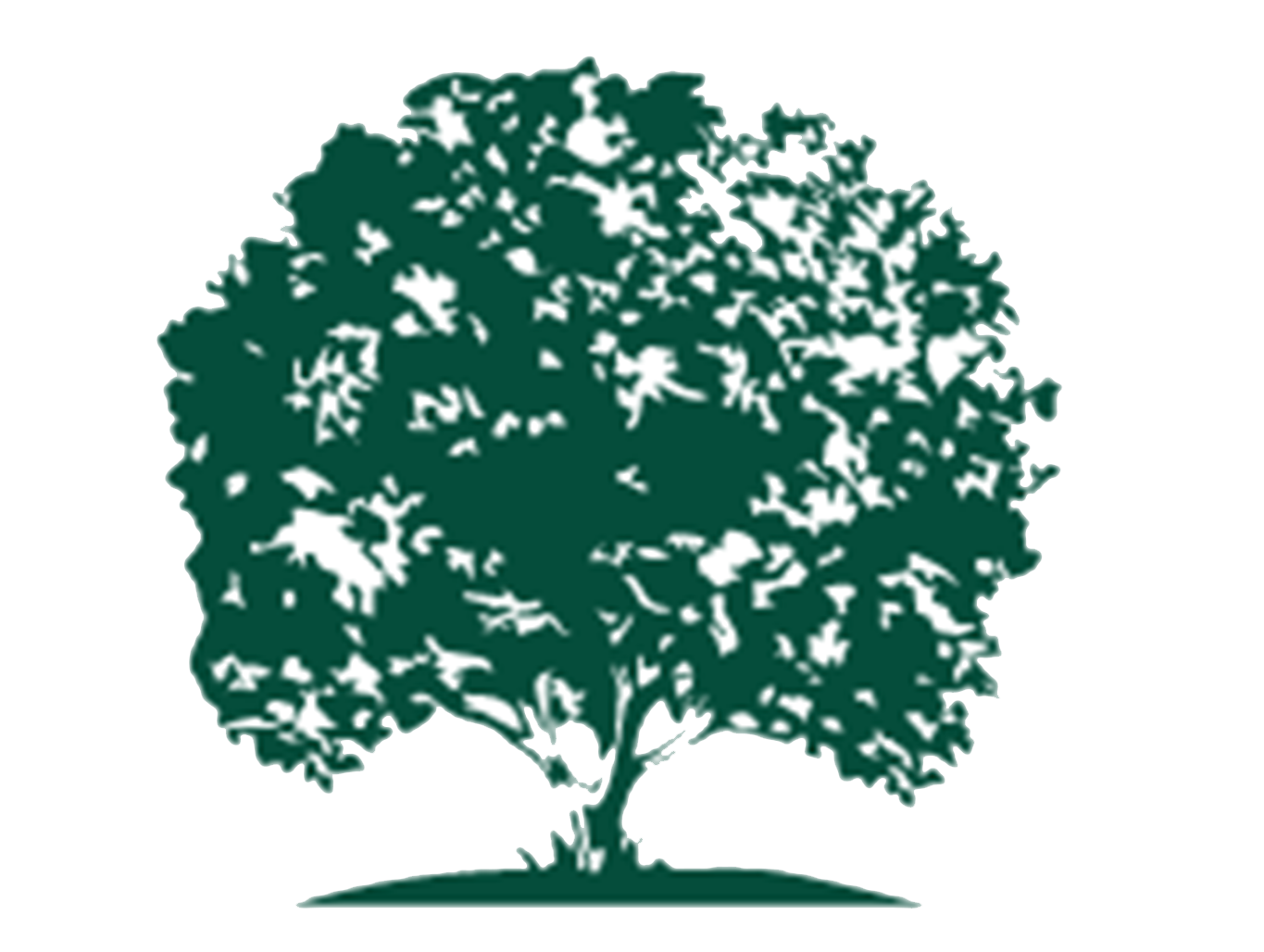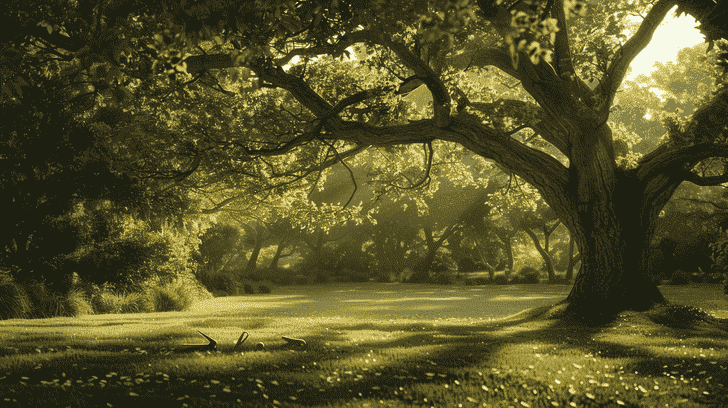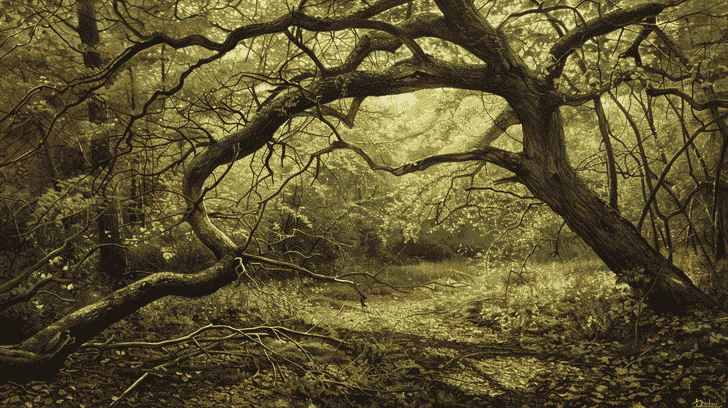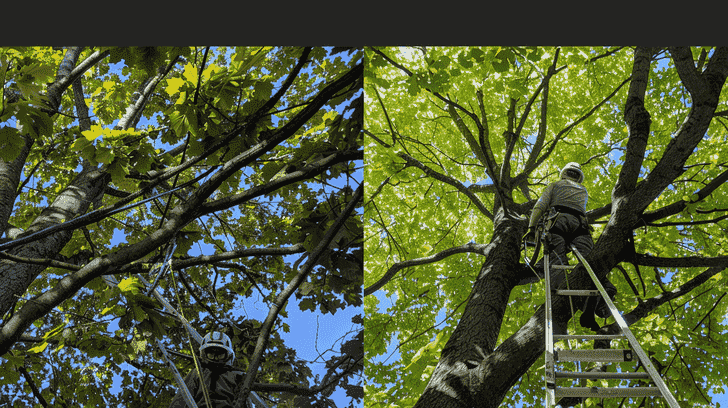Pruning Oak Trees: Tips for Healthy Growth
Pruning oak trees is a crucial step in maintaining their health and promoting robust growth.
To prune your oak tree effectively, start by removing any dead, diseased, or damaged branches, as these can harbor pests and diseases that can spread to healthy parts of the tree.
Next, identify any crossing or rubbing branches that can cause damage and remove the weaker of the two.
Thin out the canopy to allow sunlight to penetrate and air to circulate, reducing the risk of fungal infections.
When pruning, make clean cuts just outside the branch collar, using sharp, sanitized tools to prevent spreading diseases.
Prune during the dormant season (winter or early spring) to minimize sap bleeding and reduce stress on the tree.
Finally, avoid over-pruning, as this can stress the tree and lead to disease or pest issues.
Understanding Oak Trees
When it comes to pruning, understanding the unique characteristics and needs of oak trees is vital, as these deciduous giants have been a cornerstone of many landscapes for centuries.
You’ll find that oak trees have a complex branching system, with a central leader and lateral branches that grow outward.
As you prepare to prune, keep in mind that oak trees have a high water demand, especially during the first year after planting. They also require full sun to partial shade, depending on the species.
When pruning your oak tree, it’s essential to maintain a strong central leader to support the tree’s structure.
Timing Your Pruning
As you prepare to prune your oak tree, it’s important to take into account the timing of this vital task.
You’ll soon learn that the season you prune can greatly impact the health and appearance of your tree.
Pruning oak trees in fall
Pruning oak trees in the fall, after the leaves have dropped, allows you to inspect the tree’s branching structure more easily. This is an ideal time to identify and remove any dead, diseased, or damaged branches.
When pruning oak trees in the fall, you’ll want to take care to avoid spreading oak wilt, a fungal disease that can harm your tree. To prune oak trees safely, follow these tips:
- Make clean cuts: Cut outside the branch collar, and never tear the bark.
- Remove only what’s necessary: Trim only the branches that are dead, diseased, or damaged.
- Disinfect your tools: Use a 10% bleach solution to prevent the spread of oak wilt between cuts.
Pruning oak trees in winter
You’ll find winter to be an ideal time to prune oak trees, since the cold weather slows down their growth, giving you a clearer view of their branching structure.
This allows you to carefully trim only in the winter, making precise cuts without worrying about stimulating new growth.
When pruning oaks in winter, focus on removing dead, diseased, or damaged branches.
Cut them off at the base, making a clean cut just outside the branch collar. Avoid pruning too much, as this can stress the tree.
Instead, trim oak trees judiciously, removing only what’s necessary to maintain a healthy, balanced shape.
Pruning oak trees in summer
During summer, oak trees are in active growth, making it essential to time your pruning carefully to avoid promoting weak growth or exposing the tree to disease.
You should prune your oak tree in summer only when necessary, as it can be stressful for the tree.
When you do prune, make sure to remove any dead or damaged branches to prevent the spread of disease.
Here are some tips to keep in mind when pruning your oak tree in summer:
- Prune only what’s necessary: Avoid over-pruning, as this can cause stress to the tree.
- Remove dead or damaged branches: This will help prevent the spread of disease and encourage healthy growth.
- Hire a professional if needed: If you’re unsure about pruning your oak tree, consider hiring a certified arborist to do the job.
Tools and Safety
When tackling oak tree pruning, having the right tools and taking necessary safety precautions is essential to achieving desirable results and avoiding injuries.
You’ll need a combination of hand and power tools to make clean pruning cuts.
| Tool | Purpose |
| Hand Pruners | For trimming small branches |
| Loppers | For cutting thicker branches |
| Pole Pruner | For reaching high branches |
| Hard Hat and Gloves | For protecting yourself from falling debris |
Remember to always wear protective gear, including a hard hat and gloves, to prevent injury from falling branches or debris.
By having the right tools and taking necessary safety precautions, you’ll be well on your way to maintaining your oak tree’s health through proper trimming and pruning cuts, ensuring excellent tree maintenance and long-term tree health.
Pruning Techniques
Proper pruning techniques involve making precise cuts that promote healthy growth and maintain your oak tree’s structural integrity.
When trimming, you’ll want to focus on removing dead, diseased, or damaged branches, as well as those that are crossing or rubbing against each other.
This will improve air circulation, reduce disease risk, and enhance the overall appearance of your tree.
Here are some key pruning techniques to keep in mind:
- Cut outside the branch collar: This will help prevent damage to the trunk and reduce the risk of disease.
- Make clean cuts: Use sharp tools and make precise cuts to avoid tearing the bark.
- Prune during the dormant season: This will minimize stress to the tree and reduce the risk of disease.
Step-by-Step Pruning Guide
With pruning shears in hand, you’re ready to tackle the task of pruning your oak tree, following a systematic approach to guarantee a healthy and thriving specimen.
Begin by removing any dead, diseased, or damaged branches, as these can hinder the tree’s growth and attract pests.
Next, identify any crossing or rubbing branches and prune them to prevent damage. Trim any branches that are growing inwards or downwards, as these can reduce air circulation and promote decay.
Special Considerations
You’ll need to take into account several special considerations when pruning your oak tree, including its age, size, and species, as these factors can impact the pruning process and the tree’s response to it.
For instance, mature oak trees may require more careful pruning to avoid causing stress, while younger trees may be more forgiving.
Additionally, certain species of oak trees may have specific pruning needs.
Here are some key considerations to keep in mind:
- Age: Younger trees may require more frequent pruning to establish a strong structure, while mature oak trees may require less frequent, more targeted pruning.
- Size: Larger trees may require more extensive pruning to maintain their shape and size, while smaller trees may require more subtle trimming.
- Species: Certain oak species, like the white oak, may require more careful pruning to avoid causing damage to the tree’s bark or branch structure.
Common Mistakes to Avoid
When pruning your oak tree, beware of common mistakes that can cause lasting damage or even kill the tree, such as over-pruning, pruning at the wrong time, or making improper cuts.
These mistakes can lead to reduced growth, disease, or pest infestations.
| Common Mistakes | Consequences |
| Over-pruning | Reduced growth, stress, and vulnerability to disease |
| Pruning at the wrong time | New growth stimulated, making trees vulnerable to frost |
| Improper cuts | Damage to branch bark, reducing tree’s natural defenses |
| Not hiring a professional tree service | Lack of expertise, leading to further damage |
| Not considering tree type when trimming oaks | Ineffective pruning, wasting time and resources |
FAQ
When should oak trees be pruned?
Pruning oak trees at the right time is essential, since improper timing can lead to disease and pest issues.
As an oak tree owner, you want to prune at the most beneficial time for the tree’s health.
Here are the best times to prune your oak tree:
- Dormant season: Prune your oak tree during the winter months (December to February) when the tree is dormant. This minimizes the risk of oak wilt and other diseases.
- Immediately after budding: Prune your oak tree immediately after it finishes budding in the spring. This promotes healthy growth and minimizes the risk of disease.
- Avoid active growth: Avoid pruning your oak tree during active growth seasons (March to May and September to November), as this can cause stress and increase the risk of disease.
How do you trim an oak tree without killing it?
To trim an oak tree safely, you’ll need to make clean cuts using the right tools and techniques to minimize damage to the tree and prevent disease or pest issues.
Remove any dead, diseased, or damaged branches by cutting them off at the collar, which is the raised area where the branch meets the trunk.
Make a clean cut just above a growth node, angling the cut so water runs off.
Don’t leave stubs, as they can invite disease. For larger branches, use a three-cut method: make a notch on the underside, then cut from the top, and finally remove the stub. Always disinfect your tools between cuts to prevent spreading disease.
Should you seal oak trees after pruning?
You typically don’t need to seal oak trees after pruning, as the tree’s natural defenses can protect wounds from disease and pests.
In fact, applying a sealant can even hinder the tree’s natural healing process.
However, there are some exceptions to take into account:
- Oak wilt: If you’re pruning an oak tree in an area where oak wilt is prevalent, applying a sealant can help prevent the spread of the disease.
- High-traffic areas: If the pruned area is likely to come into contact with people or animals, sealing the wound can help prevent damage from rubbing or scratching.
- Large wounds: If you’ve had to remove a large branch or section of the tree, sealing the wound can help protect it from pests and disease until it has a chance to heal.
Remember to always prioritize the tree’s natural defenses and only use sealants when necessary.
Can an oak tree be topped off?
When considering oak tree maintenance, it’s natural to wonder if topping off the tree is a viable option, especially after pruning.
However, topping an oak tree is not recommended.
This drastic pruning method can cause significant stress to the tree, leading to disease and pest issues. It can also reduce the tree’s lifespan.
| Reason | Consequence | Impact |
| Topping removes | Tree becomes stressed | Reduced lifespan |
| too much foliage | Open to disease and pests | Weakened tree defense |
| Alters tree shape | Unnatural appearance | Loss of tree’s natural beauty |
Instead, focus on proper pruning techniques that promote healthy growth and maintain the tree’s natural shape.







